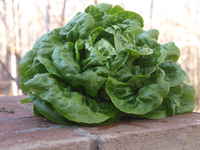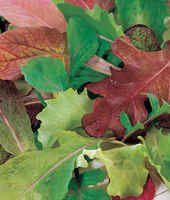The Weblog

Athens Locally Grown has closed.
Availability for January 17
This post expired on January 14, 2023.
Athens Locally Grown
How to contact us:
Our Website: athens.locallygrown.net
On Twitter: @athlocallygrown
On Facebook: www.facebook.com/athenslocallygrown
On Thursdays: Here’s a map.
Market News
I’m devoting the newsletter these first few weeks of the year to documenting in detail just how ALG works. I’ll spend some time next week talking about how growers get allowed in the market, and what standards they have to meet. But first, last week I promised I’d get into the details of how the market sustains itself financially. Many of you ask about that from time to time, and I’m happy to oblige.
First off, we’re legally a sole proprietorship, and the market is just an extension of my wife’s and my small farm. We file a Schedule F in addition to our regular tax forms. When the market started in 2002, it was named “Locally Grown Cooperative”, but it was never legally organized as a co-op. Dan & Kris Miller, the founders from Heirloom Organics farm in Watkinsville, were always sure to run things in a cooperative spirit, and since they handed the business to my wife and I in 2004, we’ve tried to do the same thing. I’ve renamed it to “Athens Locally Grown”, but you’ll still hear a number of people refer to us as “the co-op”.
We’re not a non-profit, either, but we’ve structured things so that over time the market can just cover its own expenses. Just like all of our member farms are sustainable growers, the market itself needs to be sustainable. So how does the market cover its expenses? One small way is through the memberships you pay. The $25 a year you give to the market is enough (to put it bluntly) to cover the costs of having you as a customer: banking fees from depositing your checks, paper and ink for printing, web hosting fees, and that sort of thing. What’s left over goes to helping fund farm tours, food donations to like-minded area groups and events, etc. We currently have 484 paid members out of the 3743 active accounts on the website.
By far the bulk of our funding comes from the growers themselves. They generally pay a 10% commission on their sales through the site. This money covers the many coolers we use, the tables and shelves used to spread out and organize your orders, the truck we bought at the end of 2007, gasoline, the food allowance we offer our volunteers, rent and utilities at Ben’s Bikes, etc. During the slow parts of the year, the sales are usually not enough to cover our weekly costs, but in the busy times (late fall and early spring, for us) there is extra. If we plan things out well, it pretty much all evens out in the end.
 |
 |
 |
Last year, the total sales and memberships combined through the market amounted to $359,442. This is actually a very small decline from 2010, but the continual rise of so many other markets in the area is the biggest reason for that. (We used to be the largest farmers market in this part of the state, but only because the others were so small.) About 90% went straight to our growers, and the rest went to a food allowance for our volunteers ($400 to $500 a week), rent ($200/month), tables & shelves ($1000), our farm tours (about $750 total), web hosting, and transportation. The “profit” gets counted as personal income on our tax forms, and comes out to roughly $2000. I haven’t yet calculated milage allowances and other minor expenses, and I expect that the profit total will pretty much come out to zero when I do.
The growers get paid out of the shared cashbox when they drop off their sales, during the hour before we open the market. Then, you arrive and pay into the cashbox for your order. We used to then rush to the bank to deposit the money to cover the checks we just wrote to the growers, but now the growers get paid the following week (money you pay via credit cards takes several days to reach our account). As explained elsewhere on the website, you are really ordering directly from and paying the growers yourself, but our shared cashbox system makes things convenient for you and them. (Imagine if you ordered from ten growers having to write ten checks when you picked up your items!) This shared cashbox system has so far satisfied the tax man, but it does mean that if you place an order and then never arrive to pick it up, we’re left holding the bag. For that reason, you are responsible for paying for orders not picked up, and that amount is automatically added on to your next order for your convenience. On the books right now (going back to 2007) is about $2672 of produce ordered but never picked up and so far never paid for at all (or picked up but paid for with bad checks). That might seem like a lot (and it is), but considering that the market’s sales total, that’s not so bad. In fact, it’s about a fifth of the US retail industry’s “shrinkage” rate, and almost all of it is owed by only ten people. Only $600 came from this last year. On the flip side, $5241 has been pre-paid into the cash box by people who pay online via credit card or who write large checks in person, and then draw down on that balance over time.
There were 9749 orders placed last year, so that averages to $36.87 spent per order. There are no good studies on this number, but I’ve seen a few surveys conducted by the USDA indicate that the average customer spends $25 per trip to a farmers market. We continue to far exceed that average, which I think says a lot about the advantages ALG offers over the traditional market. And to your dedication to supporting our growers.
So, in probably far too much detail, that’s how we operate financially. Our market might be more expensive to run than a traditional “booths and tables” farmers market, but that price buys a system that’s simple, time-saving, flexible, and in my opinion, just better. There’s no money in the bank, but the market is paying for itself and that’s my primary financial goal. If you’d like to talk with me in person about this or any other aspects of ALG, I’d love to do so. Just pull me aside when you come by to pick up your order.
One administrative note: next week I’ll be in Little Rock for the annual Southern Sustainable Agriculture Working Group’s annual conference. Since Doug’s Salmon keeps his fish at my house, it will not be available to purchase next week. If you want some for then, order it now! It’ll return the week after.
Thanks so much for your support of Athens Locally Grown, all of our growers, local food, and our rights to eat it. You all are part of what makes Athens such a great area in which to live. We’ll see you on Thursday at Ben’s Bikes at the corner of Pope and Broad Streets from 4:30 to 8pm!
Other Area Farmers Markets
The Athens Farmers Market has closed for the winter. You can watch for news during the offseason on their website. Most of the other area markets are also all closed for the season too. The Washington-Wilkes Farmer’s Market in Washington is open every Saturday 9-12 behind the Washington Courthouse, and several ALG vendors also sell there.
Please support your local farmers and food producers, where ever you’re able to do so!
We thank you for your interest and support of our efforts to bring you the healthiest, the freshest and the most delicious locally-produced foods possible!